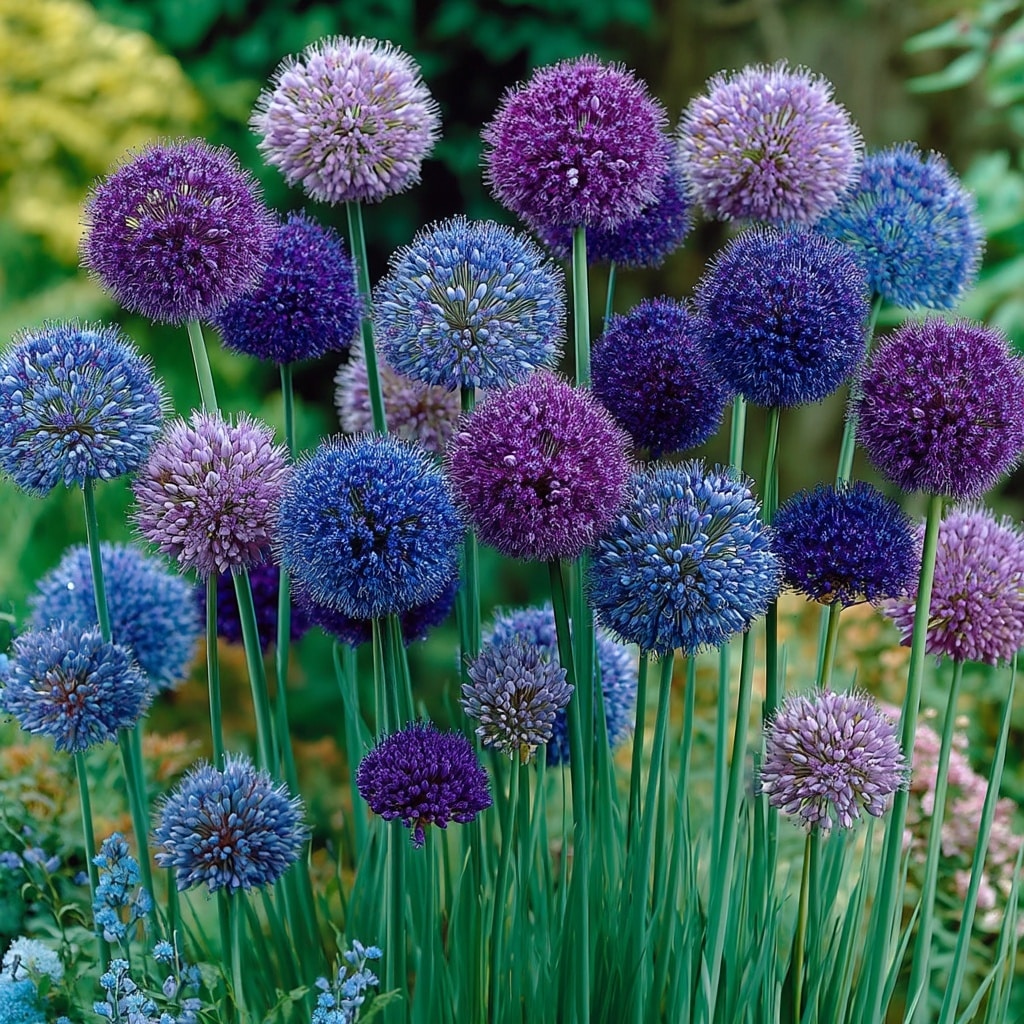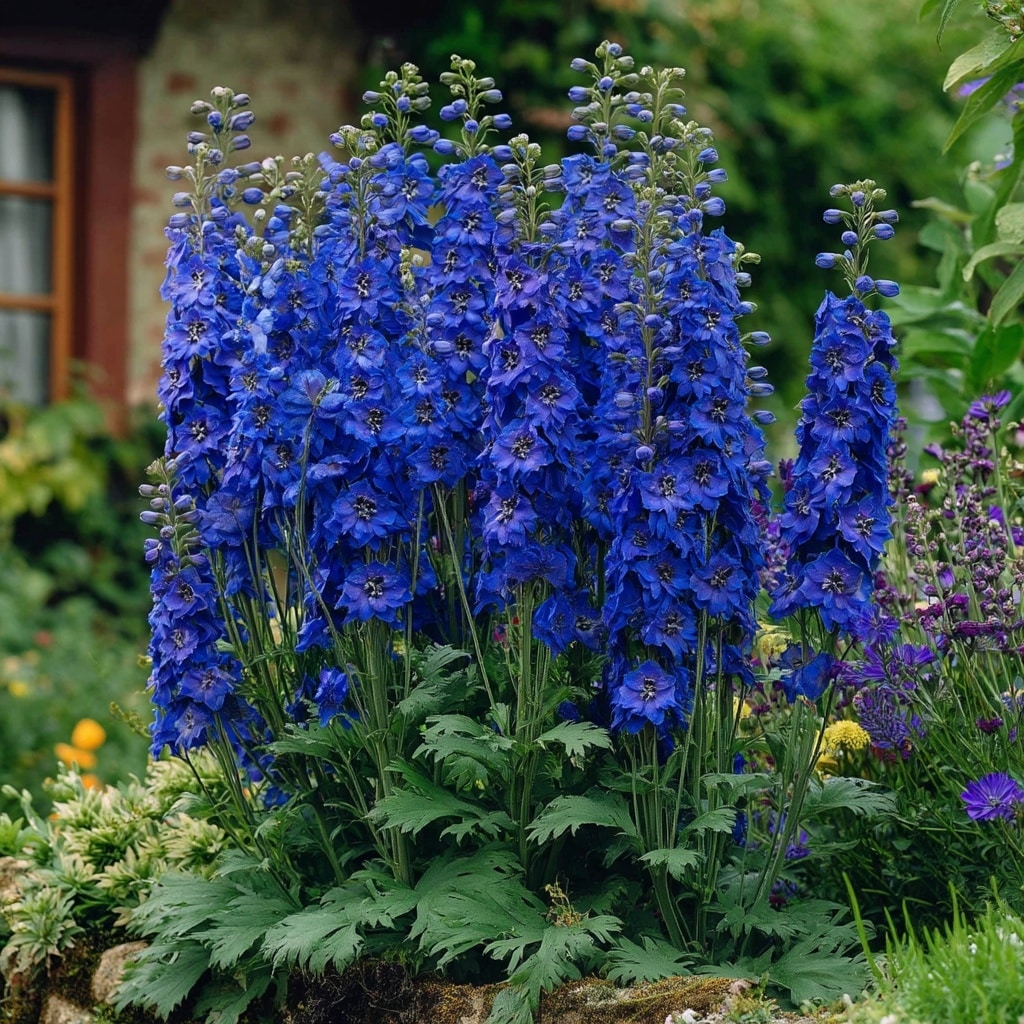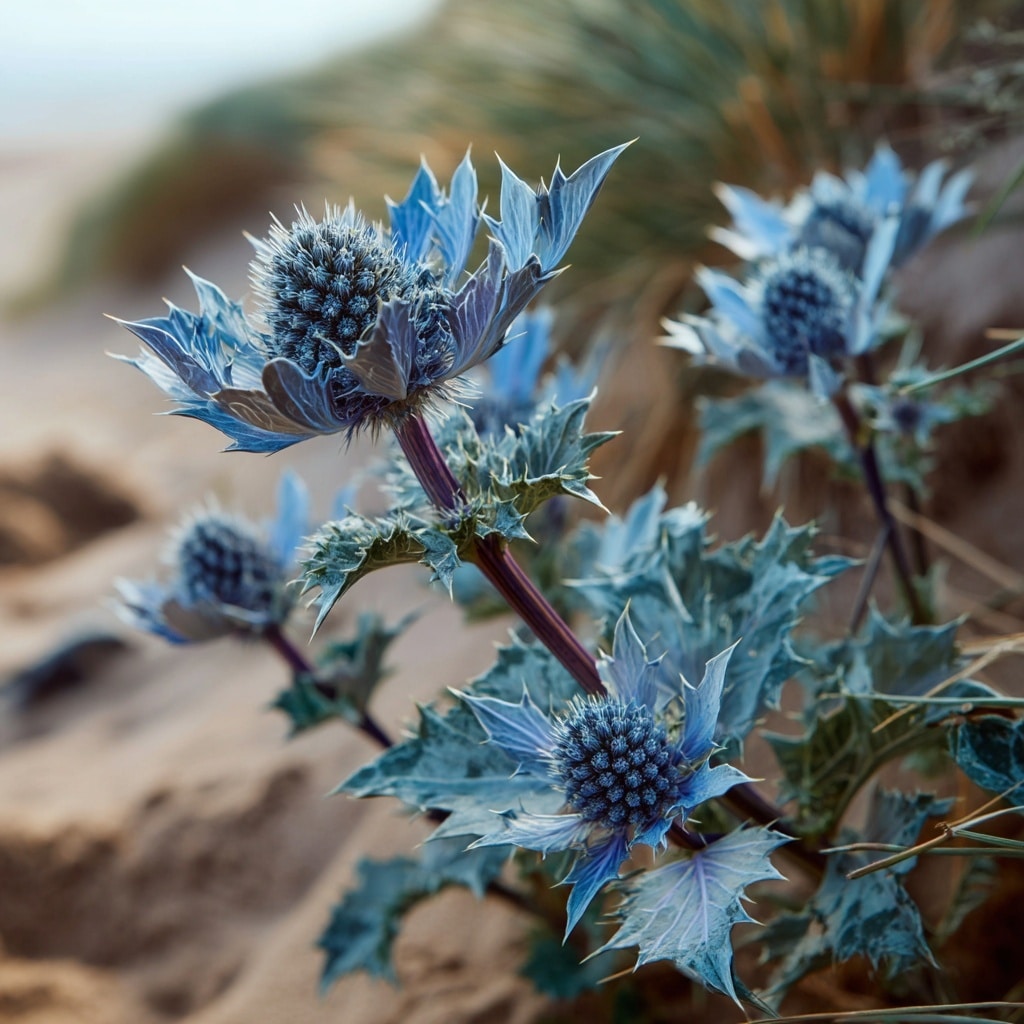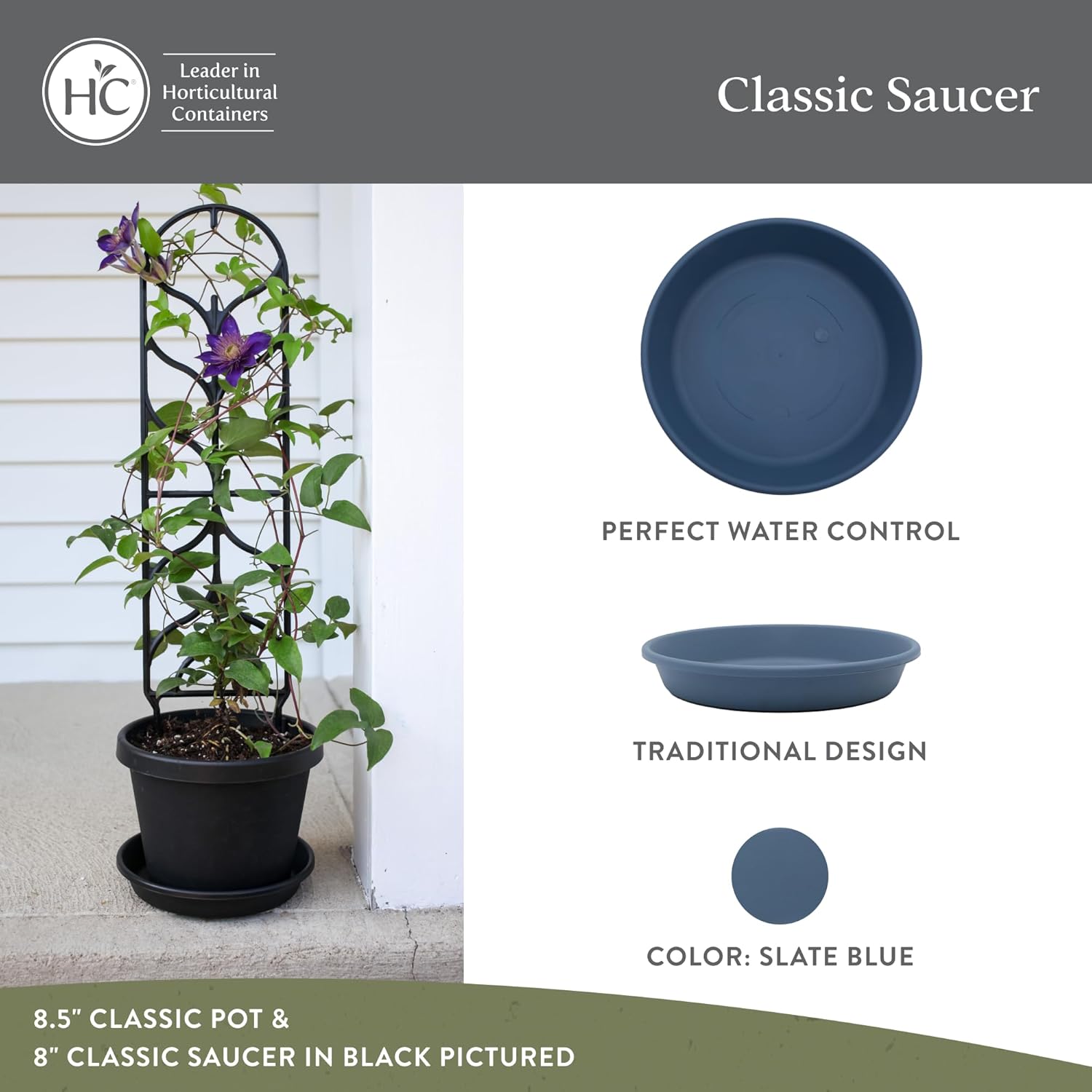Blue flowers bring a rare and breathtaking beauty to any garden. Their cool tones add contrast, calm, and sophistication among warmer-colored blooms. Whether you’re aiming for a cottage-style display or a modern landscape, adding shades of blue can instantly elevate your garden’s aesthetic.
While true blue is one of the rarest colors in the natural flower world, there are several striking species that thrive in many home gardens. From bold spikes to delicate petals, these blue flowers range in style, height, and care needs. Whether you’re gardening in full sun or partial shade, there’s a blue bloom here that will suit your space beautifully.
Table of Contents
1. African Lily (Agapanthus)
Among the most iconic blue flowers, the African Lily stands tall with globe-like clusters of trumpet-shaped blooms. Ranging in color from powder blue to deep indigo, these perennials offer a dramatic presence in garden beds, borders, or containers. Native to South Africa, they’re especially well-suited to sunny, warm climates and are a favorite for their long-lasting floral displays.
African lilies can reach up to 1.2 meters in height, making them ideal for adding vertical interest. They also double as beautiful cut flowers, holding up well in vases for extended enjoyment. Whether planted in the ground or in pots on a sunny terrace, their bold, structured blooms make them a reliable showstopper throughout mid-to-late summer.
🌿 How to Grow:
- Light: Full sun, some light shelter from strong wind
- Soil: Moist, well-draining, fertile soil
- Containers: Use loam-based compost; plant crown 5 cm below surface
- Care Tips: Water freely in spring and summer; reduce in winter
- Overwintering: In colder zones, protect with mulch or move containers indoors
These resilient blue flowers reward gardeners with reliable blooms year after year, especially when properly fed with a balanced liquid fertilizer in the growing season.
2. Flowering Onion (Allium)

Flowering onions are some of the most unique and eye-catching blue flowers you can grow. Belonging to the same family as garlic and chives, these ornamental alliums form large, globe-shaped clusters of small blooms atop tall, slender stems. Their spherical shape adds a sculptural element to gardens and makes them a favorite among children and pollinators alike.
Blooming in shades that range from soft lavender-blue to rich violet, these flowers bring drama and elegance to sunny garden beds. Some varieties produce blooms nearly the size of a soccer ball, making them ideal for focal points or mass plantings.
🌿 How to Grow:
- Light: Full sun preferred, tolerates light shade
- Soil: Well-drained, sandy or loamy soil
- Containers: Use large pots with proper drainage
- Care Tips: Avoid overwatering; use moderate moisture
- Bloom Time: Late spring through early summer
Not only are flowering onions beautiful, but they’re also low-maintenance and drought-tolerant once established. These blue flowers are an excellent choice for temperate gardens and blend well with grasses, peonies, or other perennials.
3. Cornflower (Centaurea cyanus)

Cornflowers are classic blue flowers with a long history in European meadows and cottage gardens. Known for their vivid, electric-blue color, these annuals stand out beautifully against green foliage and are beloved by pollinators like bees and butterflies. Their cheerful, daisy-like appearance makes them a charming addition to both wildflower mixes and formal borders.
These plants can reach up to one meter in height and bloom continuously from early summer to mid-autumn. Cornflowers are also fantastic as cut flowers, holding their shape and color well in bouquets.
🌿 How to Grow:
- Light: Full sun or partial shade
- Soil: Neutral to alkaline, well-drained soil
- Containers: Great for pots if spaced properly (5 cm apart)
- Care Tips: Deadhead spent blooms to prolong flowering
- Watering: Low watering needs; ideal for drought-prone areas
Easy to grow and visually impactful, cornflowers are an excellent choice for gardeners who want blue flowers that offer color, pollinator support, and season-long performance with very little fuss.
4. Delphiniums (Delphinium spp.)

Delphiniums are among the most elegant and dramatic blue flowers you can grow. With their tall, stately flower spikes, they bring vertical structure and rich color to cottage gardens, perennial borders, and cutting gardens. Blooming in shades from soft sky blue to deep cobalt, delphiniums can grow anywhere from 30 cm to over 2 meters tall, depending on the variety.
They’re a favorite for traditional English-style plantings and pair well with roses, foxgloves, and peonies. While they’re stunning, delphiniums do require a bit of care and attention — particularly support for taller stems and well-prepared soil.
🌿 How to Grow:
- Light: Full sun and airy, open space
- Soil: Moist, fertile, and well-draining
- Containers: Use 8L or larger pots for compact varieties
- Care Tips: Stake taller types; cut back withered foliage to promote new growth
- Winter Care: Mulch well to protect roots from frost
For gardeners willing to give them the attention they need, delphiniums deliver some of the most spectacular blue flowers of the summer season, often blooming again if trimmed after the first flush.
5. Sea Holly (Eryngium spp.)

For a truly unique addition to your garden, Sea Holly offers spiky, architectural blue flowers that are anything but ordinary. With silvery-blue stems and thistle-like blooms, these drought-tolerant perennials bring texture and intrigue to sunny, coastal, or gravel gardens. Their distinctive cone-shaped centers are surrounded by bristly bracts, giving them a dramatic, almost metallic appearance.
Beyond their bold aesthetic, sea hollies are tough, reliable, and excellent for pollinators. They’re also deer-resistant and ideal for poor or sandy soils, making them a top choice for low-maintenance, eco-friendly planting schemes.
🌿 How to Grow:
- Light: Full sun only
- Soil: Well-drained; thrives in sandy or rocky conditions
- Containers: Not ideal due to deep taproot
- Care Tips: No fertilizer needed; avoid overwatering
- Bloom Time: Summer to early autumn
Once established, sea holly requires almost no care. These blue flowers are also long-lasting when cut or dried, adding flair to floral arrangements indoors or out.
6. Love-in-a-Mist (Nigella damascena)

Delicate and whimsical, Love-in-a-Mist earns its name from the lacy, thread-like foliage that surrounds its soft-petaled blooms. These charming blue flowers often appear in sky-blue, pale purple, or white tones, and seem to float in a mist of green. A staple in cottage gardens, they add a romantic, ethereal feel to borders and beds.
Growing up to 90 cm tall, Love-in-a-Mist is easy to cultivate and self-seeds readily, ensuring year-after-year color with minimal effort. It’s also a wonderful cut flower, often used in rustic or wildflower-style bouquets.
🌿 How to Grow:
- Light: Prefers full sun, tolerates light shade
- Soil: Loose, rich, well-drained
- Containers: Not recommended; best in-ground
- Care Tips: Keep soil slightly moist; weed regularly
- Feeding: Apply general-purpose fertilizer monthly
These fast-growing blue flowers bloom in late winter and spring in most climates and are especially well-suited for Mediterranean and temperate gardens.
Final Thoughts: Add Cool Color With Blue Flowers
Whether you’re creating a vibrant flower bed or aiming for subtle elegance, blue flowers offer something truly special. From bold spikes to soft petals, these blooms enhance any garden with serenity, structure, and seasonal charm.
With options for full sun, shade, pots, and borders, there’s a blue bloom for every space. Choose your favorites, follow these simple care tips, and enjoy the striking color and calming presence these beautiful flowers bring to your outdoor sanctuary.






